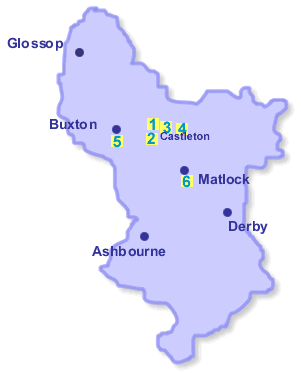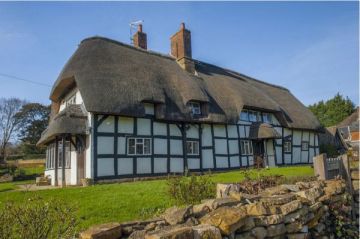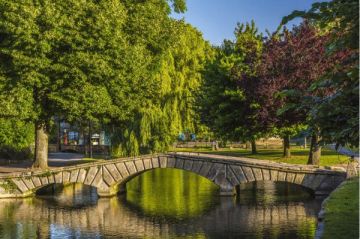
The Derbyshire Peaks offer a staggering number of enjoyable opportunities to delve underground and explore the wonders of the world where the sun doesn't shine. Three of the caves are clustered around Castleton, in the Hope Valley, where an interpretive centre offers visitors a chance to learn about the unique geology of the region.
Blue John Cavern - (marked 1 on the map)
Home of 8 of the 14 known varieties of fluor-spar, including its namesake Blue John Stone. Visitors can view old mining equipment and visit the Waterfall Cavern and Grand Crystallized Cavern on regular guided tours.
Details
Blue John Cavern
Castleton
Hope Valley
Derbyshire
England
S33 8WP
Location: on the A625 W of Castleton
map
Heights of Abraham - (marked 6 on the map)
Certainly, the most dramatic way to approach any of the Derbyshire caves - a cable car ride from Matlock Bath takes visitors high across the valley to the Heights of Abraham, so named because a British army officer thought they looked like the famous cliffs outside Montreal, where he had fought against the French. The views across the Derwent river valley are wonderful, but further sights await underground. For once you alight from your cable car, you can visit not one, but two showcaves. There are also children's play areas and educational exhibits to learn about the geology of the region and the formation of the caves, as well as showcasing some of the fossils that have been found here. A Victorian Tower offers excellent views, and there are walking trails across the hillside.
Details
Heights of Abraham
Matlock Bath
Derbyshire
England
DE4 3PD
Location: on the A6, 18 miles N of Derby
map
Peak Cavern - (marked 4 on the map)
Located just west of Peveril Castle, Peak Cavern is accessed by a short walk from a car park off Castleton High Street. The mouth of the cave is the largest in Britain. Inside the cave mouth, you can clearly see signs of habitation by rope makers, who used the caves to live and work for centuries. Further in, the caves show the wear and tear of water activity; indeed, the furthest parts of the caves may occasionally be closed off when heavy rains raise the water levels.
Poole's Cavern - (marked 5 on the map)
Located just outside the spa town of Buxton, these caves were named after an infamous outlaw John Poole, who, rumour has it, used them as a hideout during the early years of the 15th century. For many years the existence of Poole was in doubt, but a recent stash of coins dating from the early 1400s found within the caves does tend to lend credence to the tales. As for the caves themselves, they show some quite remarkable limestone deposits reminiscent of mushrooms, and some much larger calcite deposits that glitter like ice in the low light. Neolithic and Roman remains have been found in the caves, and these are displayed in the visitor centre at the cave entrance.
Speedwell Cavern - (marked 2 on the map)
Another of the Castleton caves, Speedwell is unique in that visitors can travel through the caves by boat. In places, the roof of the caves is so low that in the past, guides would propel the boat forward by using their feet on the roof of the passage! The boat journey brings you to the Bottomless Pit, a huge underground lake and chamber that has been compared to a subterranean cathedral.
Details
Speedwell Cavern
Winnats Pass
Castleton
Derbyshire
England
S33 8WA
Location just W of Castleton
map
Treak Cliff Cavern - (marked 3 on the map)
Another of the Castleton caves, Treak Cliff is the home of Blue John Stone, the colourful fluor-spar used for centuries to make bowls, goblets, and other fine artefacts. Tours showcase underground caverns boasting stalagmites and stalactites, as well as a variety of mineral deposits and fossils.
Details
Treak Cliff Cavern
Castleton
Hope Valley
Derbyshire
England
S33 8WP
Location: just W of Castleton
map


